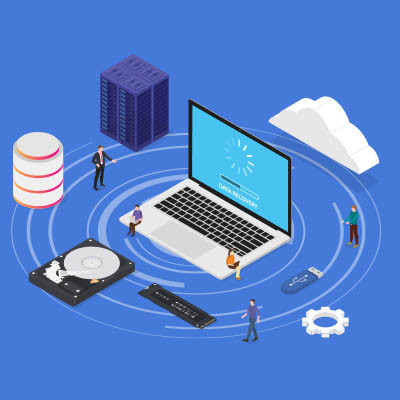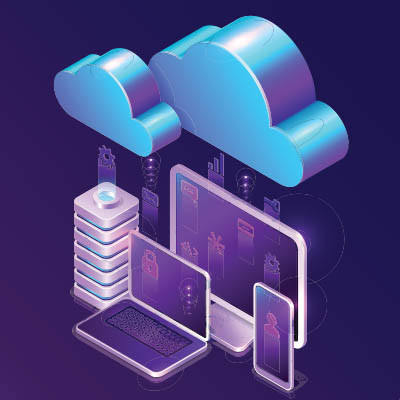You've heard the grumbling, seen the memes, and probably even felt it yourself: that vague, all-powerful entity known as the algorithm. It's blamed for everything from political polarization to your inexplicable obsession with people eating military rations. What exactly is it, and what digital giants are pulling its strings?
TS3 Technologies Blog
Bring Your Own Device (BYOD) is a solution that has grown more popular over the past decade or so, primarily because more employees already own devices capable of running work-related applications. The employee gets to use a device they already know and love, while the employer saves money from the cost of equipping that employee. That said, the security risks associated with BYOD can undermine an ill-prepared implementation and open the door to potential legal action.
If you want your devices to keep running smoothly, including utility and security, you need to ensure they are updated. Updates sometimes cause problems beyond what they solve, however. What looks like a routine patch or update could impact your important applications, and if you’re not careful, you could potentially cause a downtime scenario simply by being proactive with your updates.
In a lot of ways, your business’ IT is just like a chair; you want it to feel stable, steady, and secure, not unbalanced and unsteady. In particular, a reliable security strategy depends on three legs: your people, your processes, and your technology. Let’s look at how you can use this “stool” approach to IT security to improve your company’s resiliency to potential threats.
We often publish articles about the cloud and how it’s impacting the world of business, but one thing you can never get away from is how important security is to this mission. Regardless of the use, the cloud is only helpful if it’s secure, and it can actively hold your business back if you neglect this important aspect of its operations.
A backup is mandatory for any business, but not all backups are the same. You’ll want to be prepared for more than just a simple server crash; you’ll need geographical redundancy that can protect your business even in the face of disasters that destroy your servers or physical location. Yes, local backups are helpful, but you’ll need the power of geographical redundancy to overcome the most horrific disasters that could strike your business.
Acquiring a competitor can be a rewarding and profitable move, but it's crucial to inspect their technology to avoid any unwelcome surprises. A thorough IT audit helps you understand what you're getting and prevents a valuable investment from becoming a money pit. Let’s take a look at some of the things you need to assess before agreeing to take on growth through an acquisition.
Cyberattacks are not to be underestimated. The damage that they can do—even in the first hours—is considerable. This means you need to have a strategy to respond to these incidents, conveniently called an incident response plan.
This procedure should be both tested and documented, preparing you to withstand any cyberattack with minimal damage or disruption. As you might expect, the first hour or so will be a crucial period during this process. Let’s go over what you need to do.
Reliable IT advice is hard to come by, especially for cybersecurity. Whether it's uninformed coworkers or fake online influencers with their guides and platforms, most advice you find these days is bound to be outdated, incorrect, or both. You don’t want to base your business’ security around security myths, so we’re here to bust them today and offer you some guidance you can trust.
Data breaches are no joke, and they can be so severe that businesses have a hard time bouncing back. Despite the danger, you can somewhat predict when you are at risk of a data breach, and certain actions can be taken to keep them from being fatal (or prevent them entirely). Today, we want to examine three of the common ways data breaches happen and what you can do about them.
It’s easy to let issues with your technology cause productivity to crash and burn, especially when you’re in the thick of a major project or a complex task. Frustration is all too common in the office, especially where technology is concerned, but it doesn’t have to ruin your day or kill your productivity. Today, we want to discuss how maintaining your composure is the best way to address these issues.
Your business’ security infrastructure does a lot of heavy lifting, primarily due to today’s increasingly sophisticated cybersecurity threats. Companies want to know that their security measures work. To help you make sure you’re doing all you can to protect your infrastructure, we’ve put together five important components for any successful cybersecurity solution strategy.
If you’re worried about presentation anxiety, or if you’ve ever experienced dry mouth, sweaty palms, or a sudden loss for words while on the spot, then you’ll be happy to know about some of the options available in modern presentation tools. One in particular, Presenter View, comes to mind, and it’s a great way to kick presentation anxiety to the curb. We’ll go over how to use Presenter View in Microsoft PowerPoint and Google Slides.
We need to talk about something that is as exciting as watching water boil, but it might just save your entire business one day: backing up your data.
I know, I know. You're busy doing your thing, closing deals, and you’re busy. The last thing on your mind is where your files are outside of your server. The truth is, it’s not very interesting, but it sure is important.
The cloud is one of those solutions that you’re either taking full advantage of or you have yet to experience the true benefits it can provide. If you’re still on the fence about cloud migration, we have news for you; this decision is actually costing you in the long term. We recommend you explore the possibility of cloud migration by considering why you’re so worried about it in the first place (and why that doesn’t make sense).
There are a lot of regulations out there that businesses need to follow, both for their own good and that of their clients, customers, and associates. Many of these regulations—like the Health Insurance Portability and Accountability Act (HIPAA), the Sarbanes-Oxley Act (SOX), and the Payment Card Industry Data Security Standard (PCI DSS)—are relatively well known and critical to follow.
That said, these regulations dictate many basic practices that, to be completely frank, should already be a priority for every business that cares about its security and efficiency.
If given the opportunity, would you rather manage a room full of big, bulky servers to maintain an in-house data network, or would you prefer to decentralize your infrastructure to make it more accessible, redundant, and secure? A data center can help you do just that, and it’s not nearly as difficult or as complicated as you might think to utilize one.























